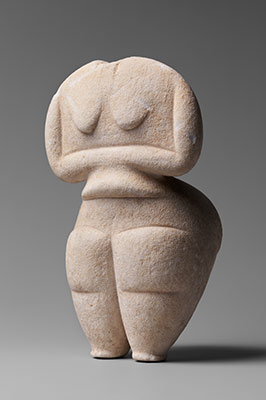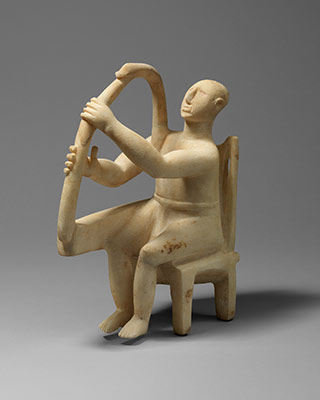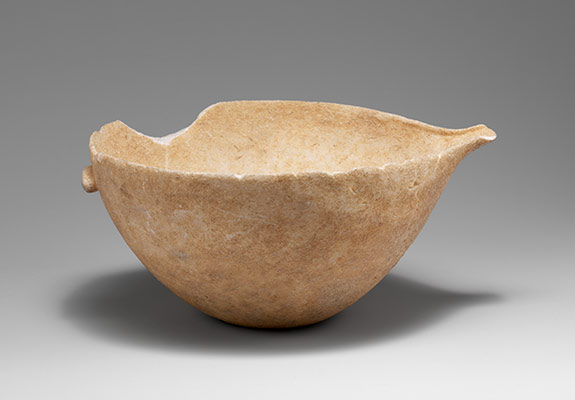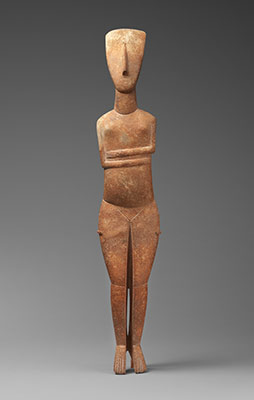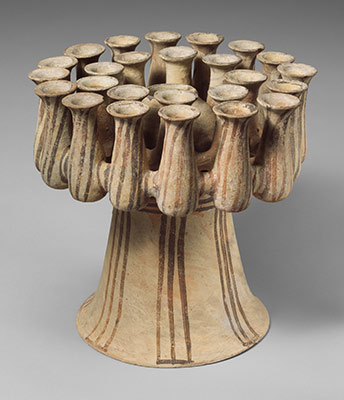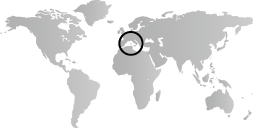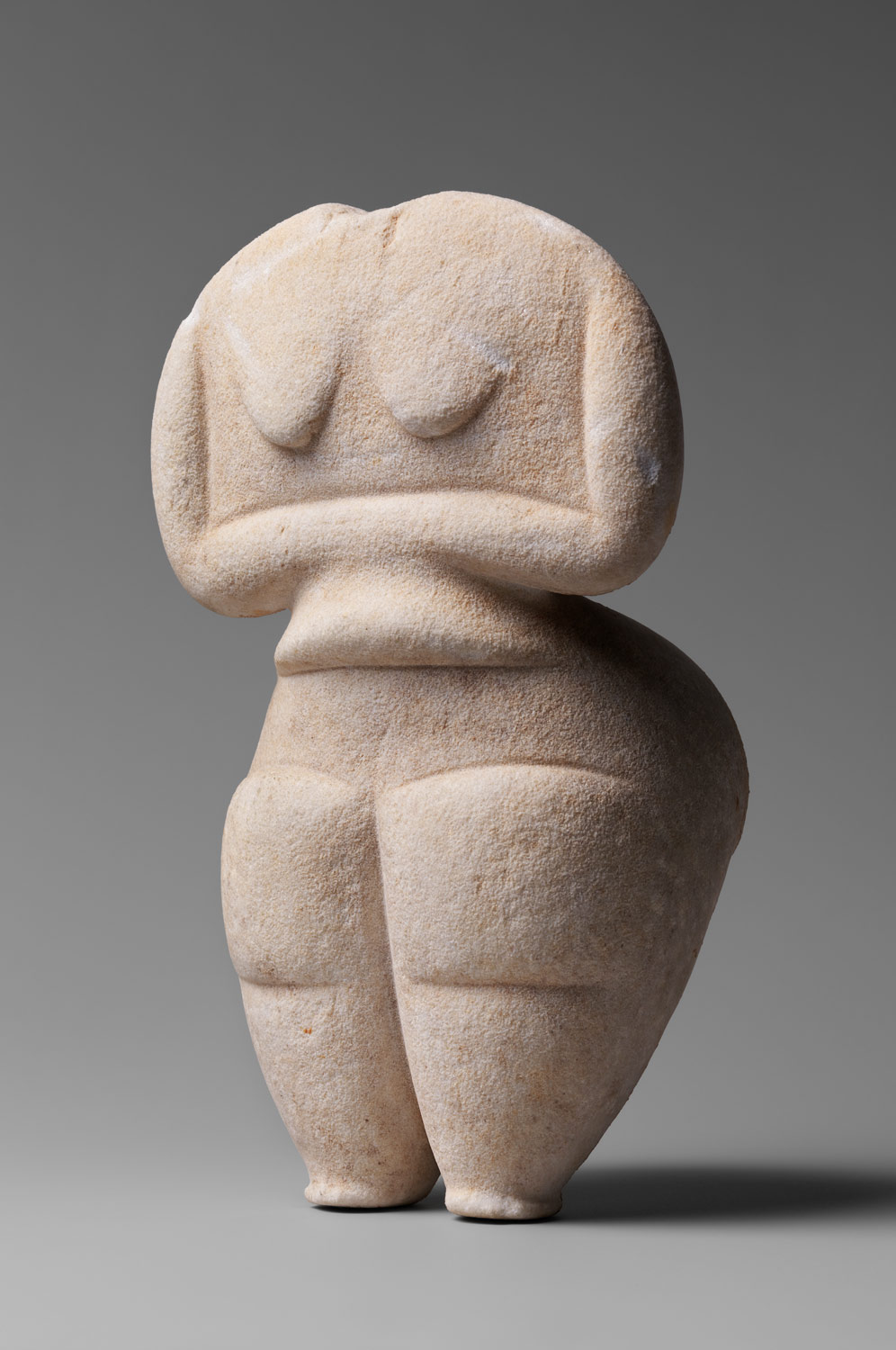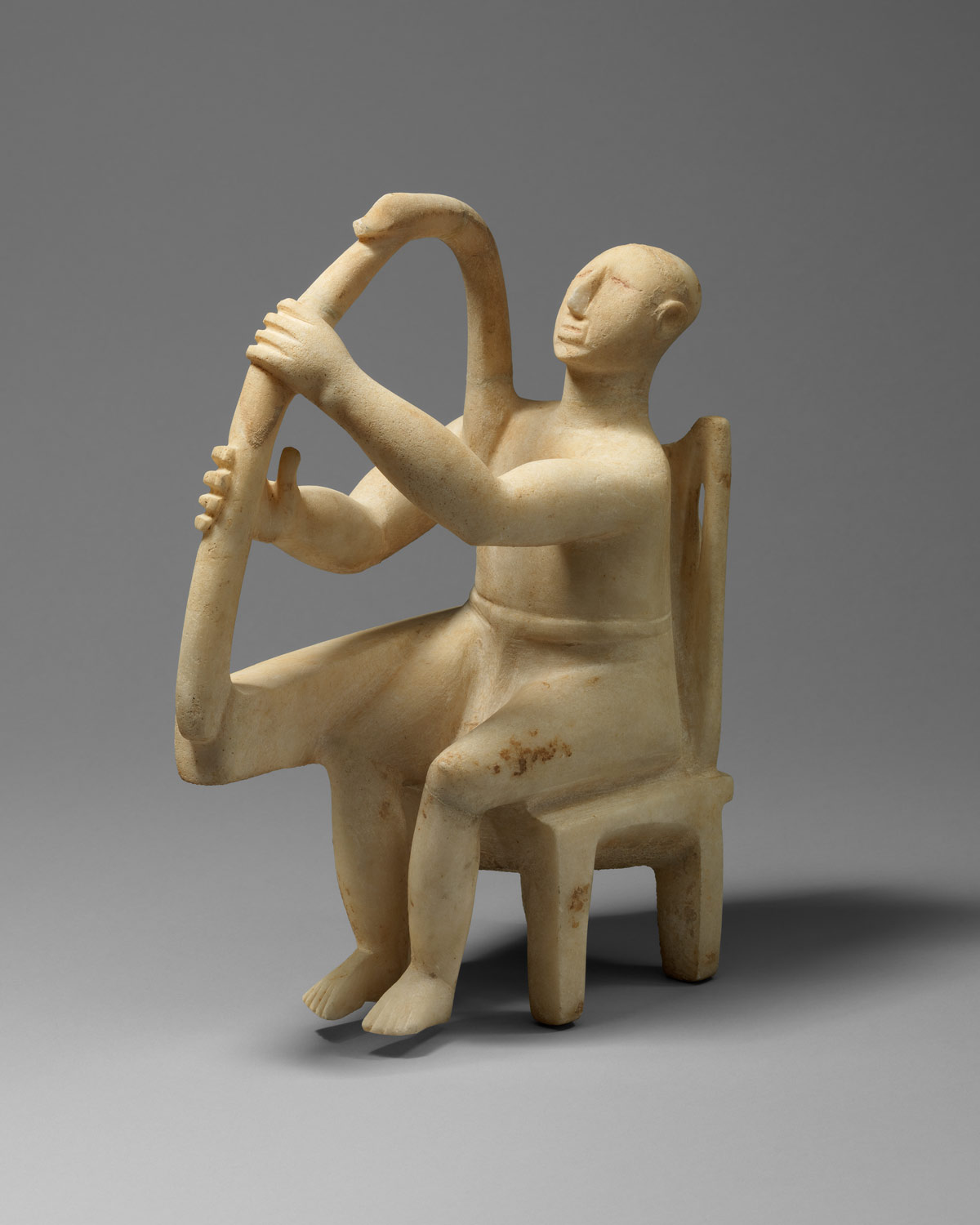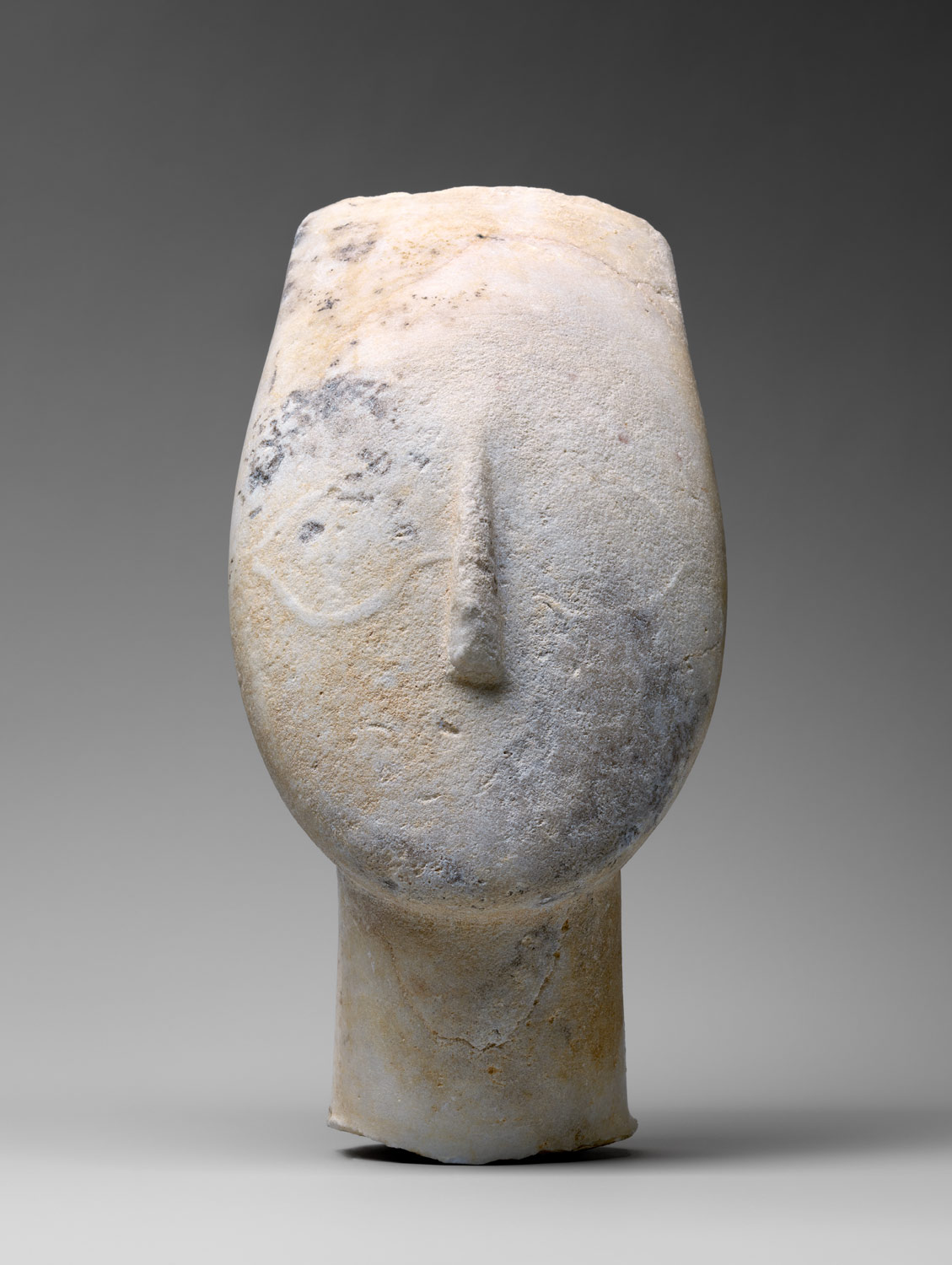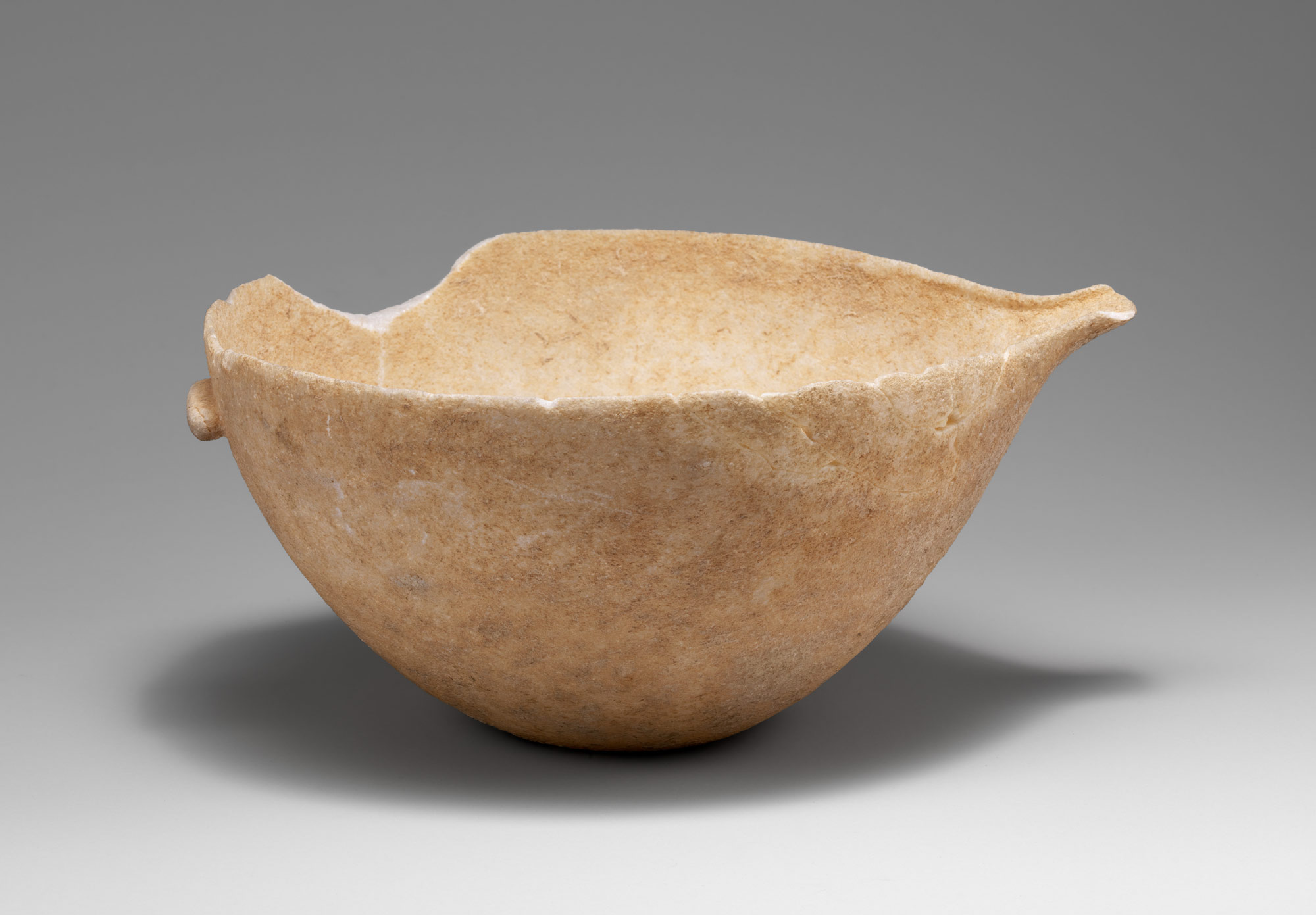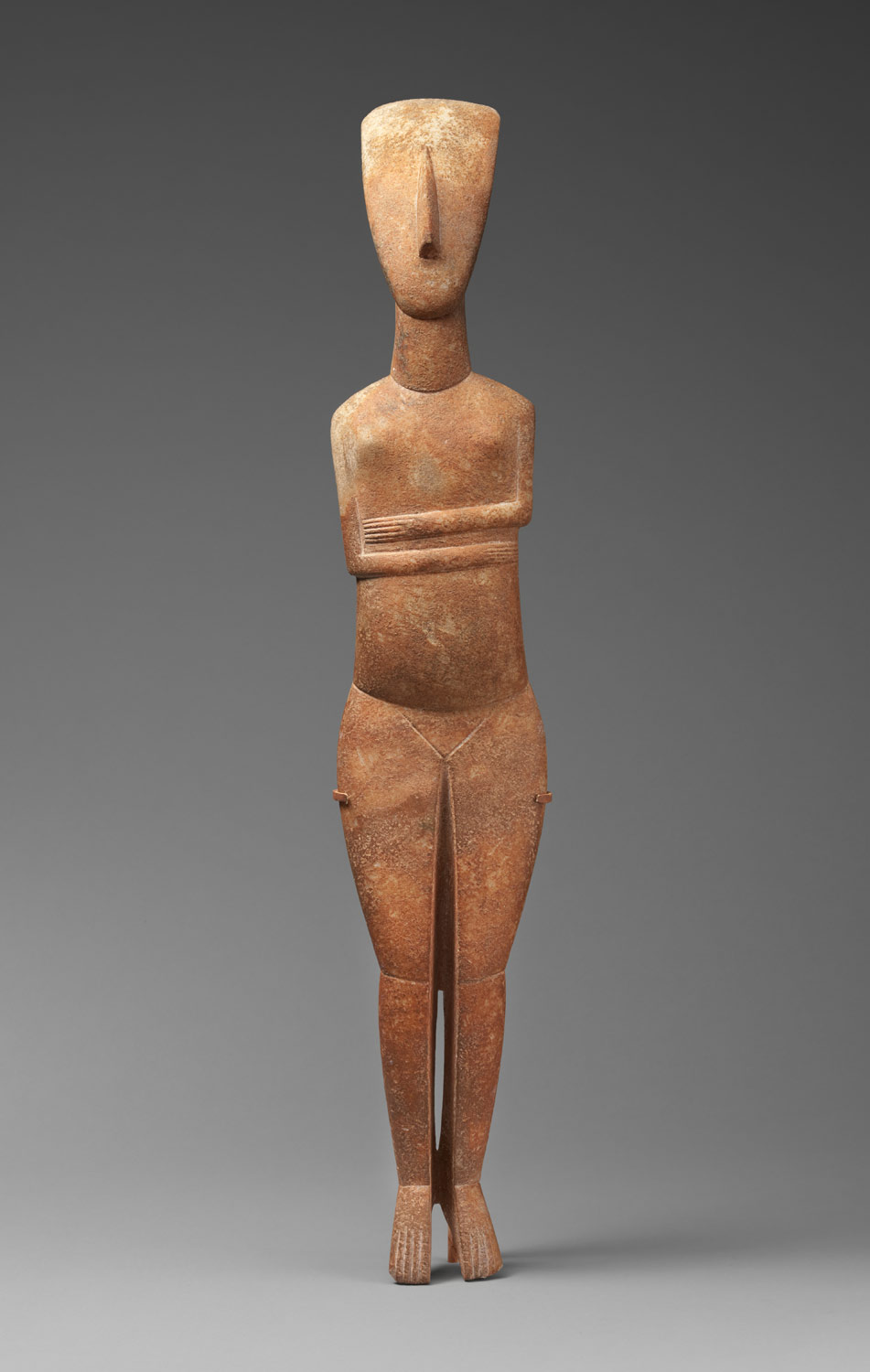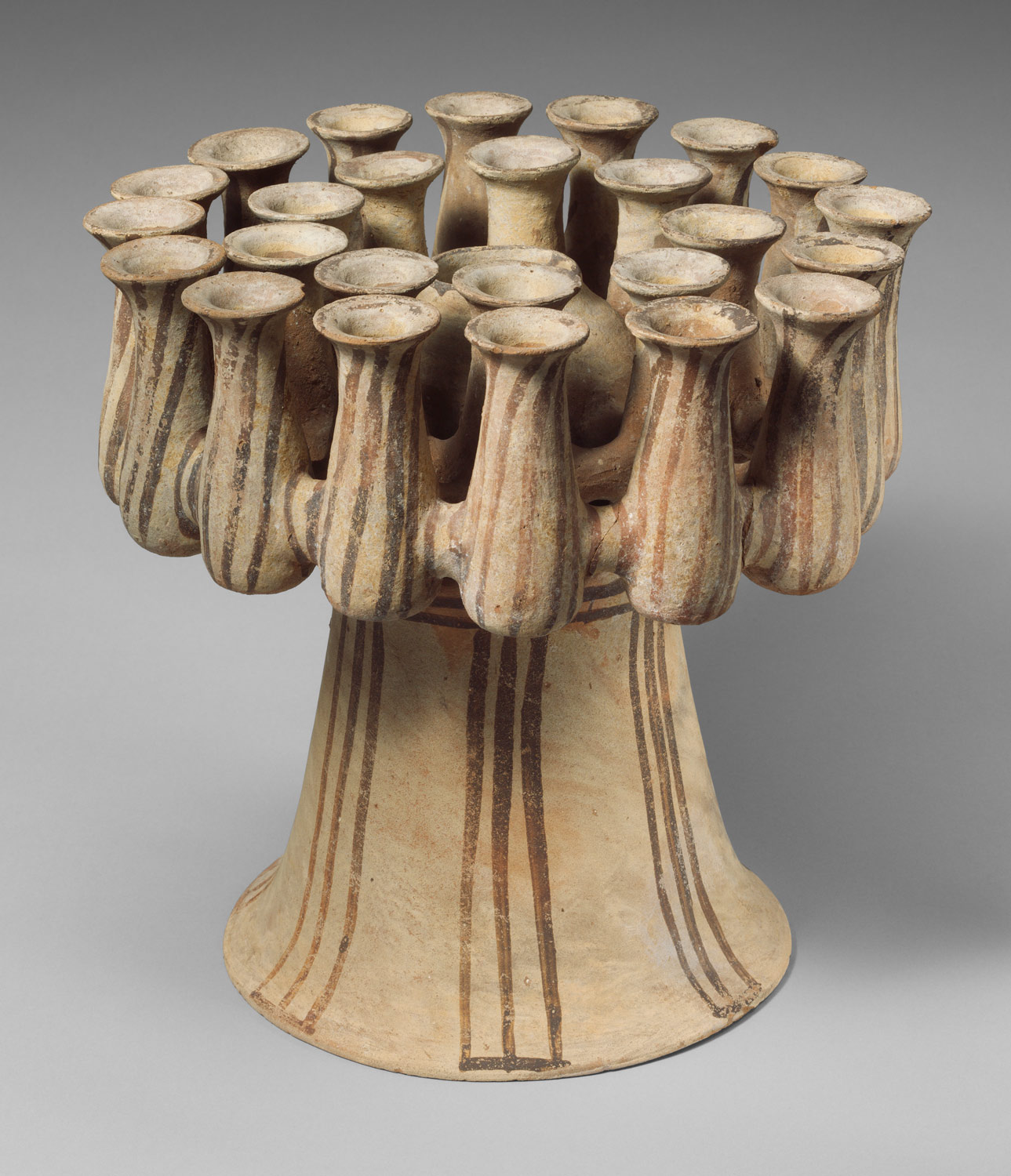Between 8000 and 2000 B.C., southern Europe witnesses a gradual but momentous change in living patterns as wandering groups of hunter-gatherers give way to sedentary agricultural and pastoral communities. This change fosters the need for greater cooperation both within and between communities. The presence at early village sites of imported materials such as obsidian implies the development of seafaring and trade.
Southern Europe, 8000–2000 B.C.
Timeline
8000 B.C.
6500 B.C.
BALKAN PENINSULA / ANCIENT GREECE
ITALIAN PENINSULA
IBERIAN PENINSULA
6500 B.C.
5000 B.C.
BALKAN PENINSULA / ANCIENT GREECE
ITALIAN PENINSULA
IBERIAN PENINSULA
5000 B.C.
3500 B.C.
BALKAN PENINSULA / ANCIENT GREECE
ITALIAN PENINSULA
IBERIAN PENINSULA
3500 B.C.
2000 B.C.
BALKAN PENINSULA / ANCIENT GREECE
ITALIAN PENINSULA
IBERIAN PENINSULA
Overview
Key Events
-
ca. 8000 B.C.
Cave art is particularly well represented in the southeast coastal region of Spain. These paintings give clear indications of dress and weapons, notably bows and arrows, and of dancing and hunting activities.
-
ca. 7250–6000 B.C.
Franchthi Cave in the Argolid, Greece, attests to the earliest deliberate burials in Greece.
-
ca. 7000 B.C.
Evidence of emmer and einkorn wheat, barley, sheep, goats, and pigs suggests that a food-producing economy is adopted in Greece and the Aegean. Pits, postholes, and foundations at Sesklo indicate simple huts. The presence of Melian obsidian implies seafaring.
-
ca. 6000–4500 B.C.
Archaeological evidence from various sites on the Iberian Peninsula suggests the domestication of plants and animals. The extreme rarity of permanent settlements suggests a relatively mobile population.
-
ca. 5700–5300 B.C.
The first “Megaron house,” a rectangular, freestanding structure with a central hearth, is built at Sesklo in central Greece. The lack of fortifications and the manufacture of elegant painted pottery during this period suggest a peaceful and flourishing agricultural society.
-
ca. 5300–3200 B.C.
Metallurgical remains from various sites on mainland Greece suggest some relationship between these communities and the rest of southeastern Europe.
-
ca. 4500 B.C.
The earliest farming takes place on the Iberian Peninsula as established by grains of cultivated barley found in a cave site near Alicante, Spain. Sedentary agriculture fosters cooperation among communities and the formation of villages consisting of animal pens and huts made from branches.
-
ca. 4500–3700 B.C.
Circular village compounds are built in the area of the Tavoliere Plain in northern Apulia. The presence of obsidian from Lipari implies some trade and seafaring. There is a general diffusion of farming communities throughout the Italian peninsula.
-
ca. 4500–3250 B.C.
The rarity of open-air settlements suggests the continuation of a relatively mobile society. Collective burials in Iberia are found in natural caves (particularly in Catalonia) and in a variety of artificial chambers. In Portugal, the construction of megalithic tombs is well under way. The earliest known on the Iberian Peninsula are built at Poco de Gatiera and Gorgines, both in present-day Portugal, around 4200–4000 B.C.
-
ca. 4100–3500 B.C.
Single burials in open-air pits occur at Toll in Catalonia. Grave lots show affinities to the Chassey culture of southern France.
-
ca. 3700–3000 B.C.
Remains of settlements at Ripoli on the terrace of the Vibrata Valley show foundations for substantial grain-storage silos, implying an abundance of food production.
-
ca. 3400 B.C.
The earliest evidence of fortifications in Greece occur at Dimini. Spacious buildings on the rocky summit suggest a rise of some sort of centralized authority at this time.
-
ca. 3250–2250 B.C.
The most characteristic physical features of the Chalcolithic period in Spain are megalithic stone burial mounds such as those at Antequera in the south.
-
ca. 3250–2250 B.C.
Central Portugal and southeast Spain have an abundance of deeply stratified, often fortified, settlements. The long-term occupation of these villages is based on intensive systems of agriculture. There is evidence for distinctions within and between communities in terms of social status and rank.
-
ca. 3200–2000 B.C.
The exploitation of the olive and the vine together with the traditional cereals, as well as the rapid expansion of metallurgy, play a major role in the earliest urbanization in the Aegean. The existence of many settlements and burial grounds on the Cycladic Islands and Crete suggest flourishing economies.
-
ca. 3000–2000 B.C.
A marble industry flourishes in the Cyclades, with notable quarries in Naxos and Paros. Cycladic sculptors produce uncompromisingly abstract sculptures that have been found mostly in burial contexts.
-
ca. 3000–2000 B.C.
Evidence for the so-called “Almerían culture” is found throughout the southeastern part of the Iberian Peninsula. The preference is for open-air villages and simple chambered tombs.
-
ca. 3000–1100 B.C.
Minoan civilization flourishes on Crete. It reaches its apogee between 1700 and 1100 B.C. with the establishment of centers, known as palaces, that concentrate political and economic power, as well as artistic activity, and may serve as centers for the redistribution of agricultural commodities. The Minoans employ two scripts: a hieroglyphic script whose source of inspiration is probably Egypt, and a linear script, Linear A, perhaps inspired by the cuneiform of the eastern Mediterranean.
-
ca. 2800 B.C.
Evidence for the Lagozza culture in lakeside settlements set on pilings is found in the Po River valley in northern Italy. There is some evidence of wildfowling, weaving, and spinning. The Gaudo culture settles in Campania, and its inhabitants build chamber tombs with multiple successive inhumations; nothing is known of their habitation sites.
Citation
“Southern Europe, 8000–2000 B.C.” In Heilbrunn Timeline of Art History. New York: The Metropolitan Museum of Art, 2000–. http://www.metmuseum.org/toah/ht/?period=02®ion=eus (October 2000)
Related
Map
Primary Chronology
Secondary Chronology
Lists of Rulers
See also
Keywords
- Ancient Greek Art
- Balkan Peninsula
- Central Italy
- Cycladic Art
- Eastern Europe
- Europe
- Florence
- Greece
- Iberian Peninsula
- Istanbul (Constantinople)
- Italy
- Minoan Art
- Murano
- Naples
- Northern Italy
- Portugal
- Rome
- Southern Italy
- Spain
- Turkey
- Venice
- Prehistoric Art
- Neolithic Period
- Chalcolithic Period
- Bronze Age
- 8th Millennium B.C.
- 7th Millennium B.C.
- 6th Millennium B.C.
- 5th Millennium B.C.
- 4th Millennium B.C.
- 3rd Millennium B.C.
